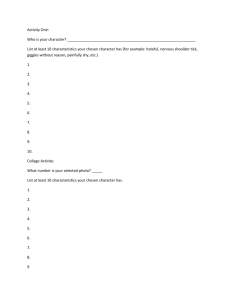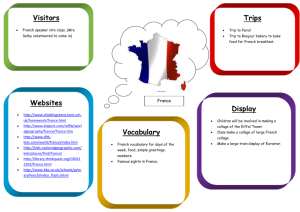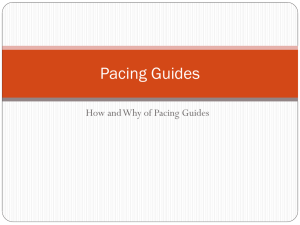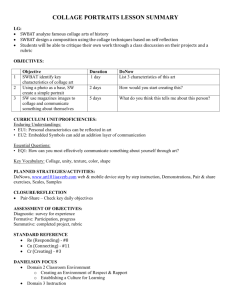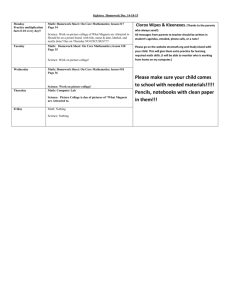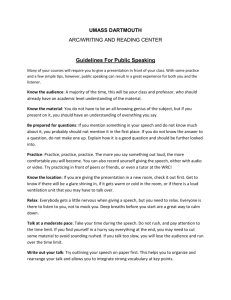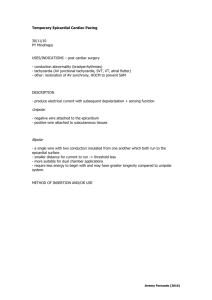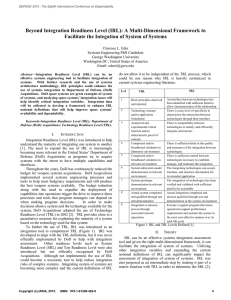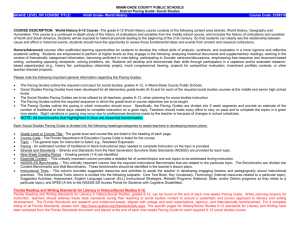Independent Reading Project
advertisement
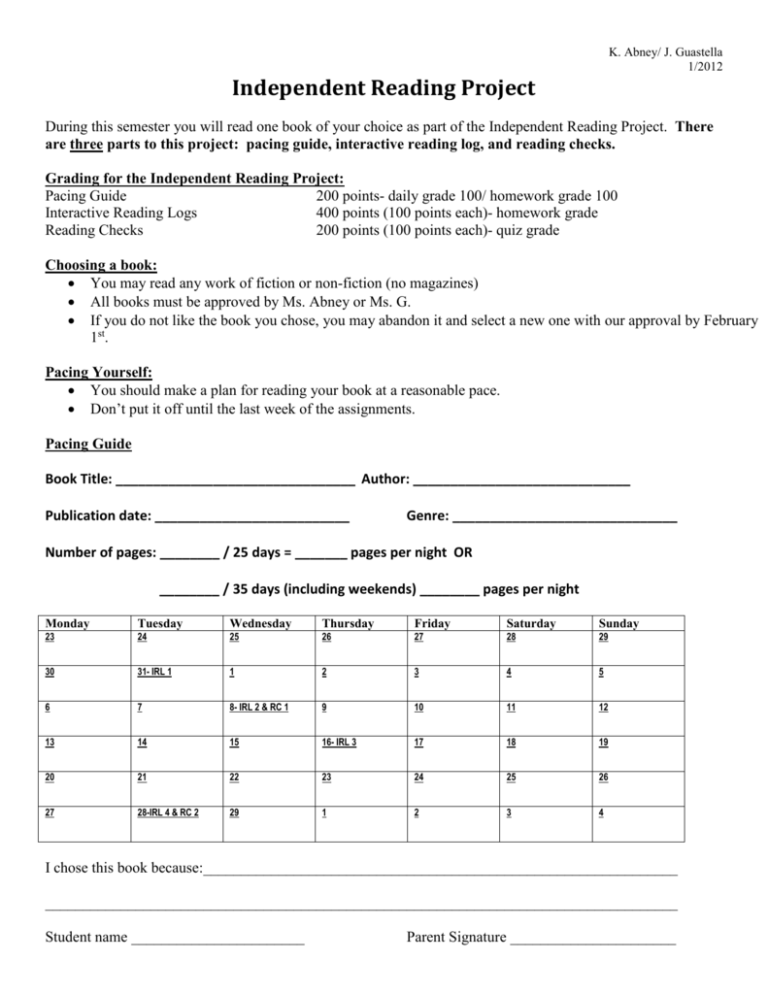
K. Abney/ J. Guastella 1/2012 Independent Reading Project During this semester you will read one book of your choice as part of the Independent Reading Project. There are three parts to this project: pacing guide, interactive reading log, and reading checks. Grading for the Independent Reading Project: Pacing Guide 200 points- daily grade 100/ homework grade 100 Interactive Reading Logs 400 points (100 points each)- homework grade Reading Checks 200 points (100 points each)- quiz grade Choosing a book: You may read any work of fiction or non-fiction (no magazines) All books must be approved by Ms. Abney or Ms. G. If you do not like the book you chose, you may abandon it and select a new one with our approval by February 1st. Pacing Yourself: You should make a plan for reading your book at a reasonable pace. Don’t put it off until the last week of the assignments. Pacing Guide Book Title: ________________________________ Author: _____________________________ Publication date: __________________________ Genre: ______________________________ Number of pages: ________ / 25 days = _______ pages per night OR ________ / 35 days (including weekends) ________ pages per night Monday Tuesday Wednesday Thursday Friday Saturday Sunday 23 24 25 26 27 28 29 30 31- IRL 1 1 2 3 4 5 6 7 8- IRL 2 & RC 1 9 10 11 12 13 14 15 16- IRL 3 17 18 19 20 21 22 23 24 25 26 27 28-IRL 4 & RC 2 29 1 2 3 4 I chose this book because:_______________________________________________________________ ____________________________________________________________________________________ Student name _______________________ Parent Signature ______________________ K. Abney/ J. Guastella 1/2012 INTERACTIVE READING LOG: You will reflect on your book and your reading process four times for homework. Each interactive response entry should be at least 1 page written or ½ page typed unless otherwise noted. Logs 1 & 2- Choose 1 for each log 1. Tell your thoughts and feelings about something that happened in the reading or something about one of the characters in the reading. How does an event or a person remind you of something in your experience or life? How does it relate? Be sure to include specific events from both the book and your own life. 2. Make a "wanted" poster for one of the characters or objects in your book. Include the following: (a) a drawing or cut out picture of the character or object, (b) a physical description of the character or object, (c) the character's or object's misdeeds (or deeds?), (d) other information about the character or object which is important, (e) the reward offered for the capture of the character or object. 3. Quote a phrase or a section of the text that impressed you for some reason (beautiful language, interesting thoughts, meaningful to you for some reason). Explain why you chose that section. Also, be sure to tell why and where the quote fits into the context of the story. 4. Predict what you think will happen in the next section of the book. Write the scene the way you think the story will unfold. Include information about the setting, character appearance, action, and dialogue, as well as plot details. 5. Become a character and write a diary with at least 3 entries. Include events from the novel and how you feel about them. Write in the voice of the character (using his/her dialect, words, and sayings). 6. Write a news article covering the events in your story. Include quotes, expert opinions, and “photos.” Be sure to include who, what, when, where, why, and how. Logs 3 & 4- Choose 1 for each log 7. Create a dictionary of terms that would help someone reading this book. Make a list of at least fifteen particular words (jargon, slang, technical language, specialized terminology, etc.) that the author uses in this story. These words must be slightly out of the ordinary; they should have particular significance in the book. Define each word as it is used in the story. 8. Write a letter to the author of the book. Tell him/her what you liked and disliked about the story and his/her writing style. Give them specific reasons and examples from the story to support what you say. Be sure that your letter is in the correct format. 9. Build a timeline for the major events in the story, focusing on at least twelve incidents. Highlight the initial conflict(s), climax, and resolution of the story in some way. Be sure that the action is accurately placed and that the time between events is indicated neatly. 10. Draw a map of where your story took place. It should contain areas where significant events happened. Use a key to describe these happenings. Be certain to include a title and label the appropriate areas. Detail, color, and accuracy are points to remember. 11. Make a collage of a major theme from the book. Use clippings from magazines, newspapers, etc. The collage must be on paper that is at least 8 ½” x 11” and should include at least 10 different clips. On the back of the collage, explain in one paragraph what theme you are representing and what it has to do with your novel. 12. Create a comic strip or a storyboard for the events in the story. Be sure that the illustrations explain the story clearly. Do not include every detail-- only those that are necessary to understand the actions. You will not be judged on your artistic talent, only on your apparent effort.
